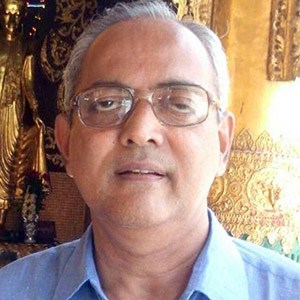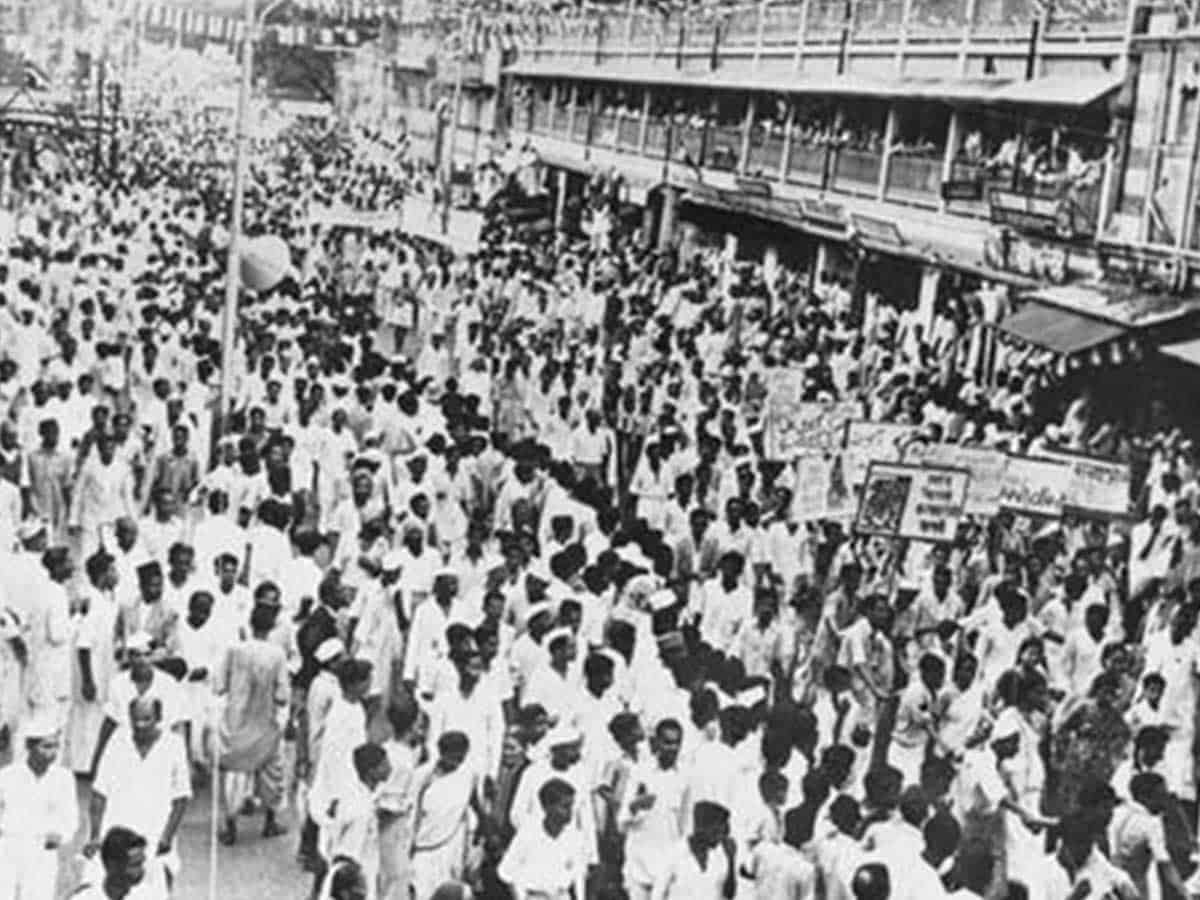
2020 marks Khilafat Movement Centenary.
In 1920, with the All-India Khilafat Committee coming into existece, the Khilafat Manifesto was published, which aimed at protecting the Ottoman Caliphate and the Turkish Khalifa (leader of the Muslim world). It was a protest movement organised against sanctions placed on the Ottoman Empire and a bid to save the Turkish Khalifa, following the Treaty of Sevres, after the end of the First World War.
However, with the outbreak of the Turkish Revolution and the rise of Mustafa Kemal Ataturk in 1923, the Khilafat Movement collapsed. The significance of the Tehreek-e-Khilafat is that it ended up uniting Hindus and Muslims in the struggle for the Indian Independence. That is why the Khilafat movement marks a major milestone in India’s freedom struggle.
The issue at stake in the Khilafat movement was not largely relevant as subsequent developments showed, but it brought masses of Muslims into the thick of the freedom struggle. The Congress, then under Mahatma Gandhi, was seeking to launch a mass-based movement.
The turning point of India’s freedom struggle came with the Khilafat Movement, as it served to transform it from a passive resistance into a mass movement. In 1920, Mahatma Gandhi extended the Congress’s support to the movement. Thus, 1920 saw the convergence of the Khilafat and the Nationalist movements.
Gandhiji launched the Non-Cooperation Movement on September 5, 1920. This marked the first of his mass struggles, with the Flag Satyagraha, Salt Satyagraha and finally the Quit India Movement on August 9, 1942, that followed. Gandhiji succeeded in galvanizing the masses as his magic worked.
The effect was electrifying, as for the first time a serious challenge was posed to British Imperialism; finally bringing it down on its knees on August 15, 1947, when India attained Independence.
Led by Maulana Abul Kalam Azad, Hakim Ajmal Khan, Hasrat Mohani and Mukhtar Ahmed Ansari, besides the Ali Brothers, Mohammed Ali and Mohammed Shaukat Ali, it was also for the first time that Muslim masses also joined the freedom struggle in a big way.
Overnight, the Congress was transformed from a party of prayers and petitions into a mass-based organization. Along with the All-India Khilafat Committee, Provincial Committees like Tehreek-e-Khilafat in Punjab and Bengal Khilafat Committee were also constituted.

It had wider appeal and acceptability. Lala Lajpat Rai in Punjab, Chittaranjan Das and Subhash Chandra Bose in Bengal, besides several other stalwarts in other provinces across India, plunged headlong into the Freedom Struggle.
The British and the Hindu Far-Right were never happy with the Hindu-Muslim Unity. The British quietly supported formation of the Muslim League in 1906 in the wake of Bengal Partition in 1905, with a view to weaken Hindu-Muslim Unity.
Prior to that, the 1857 Uprising or first war of independence (also known s Sepoy Mutiny) marked the last moment of the Hindu-Muslim Unity’s glory, when all native rulers rallied behind the leadership of the last Mughal Emperor Bahadur Shah Zafar.
1875 also marked the birth of the Arya Samaj under Swami Dayanand Saraswati in Mumbai and Sir Syed Ahmed’s Aligarh Movement in Aligarh. Both made headway in bringing about transformation in religious and social outlook of the Hindus and Muslims of North India.
Sir Syed not only kept away from the Congress, but urged Muslims to stay away from the Congress.
On the other hand, the Arya Samaj and Hindu Maha Sabha and later the RSS formed in 1925; the Hindu far-right groups also opposed the coming together of Hindus and Muslims. The British were equally opposed to such a phenomenon.
Moreover, 1905 saw the partition of Bengal and around that time, perhaps in 1906, the Muslim League was launched and it was seen largely as a British-propelled group. Both the steps openly signalled the British move to weaken the Hindu-Muslim Unity.
The year 1909 also saw elections based on separate electorates, which only confirmed the British designs. It was aimed at creating the communal basis for elections.
In 1911, Bengal was Reunified under mounting Nationalist pressure. Celebrating the occasion, at the All-India Congress Committee (AICC) Session in Kolkata, Rabindranath Tagore sang in his own voice Jana Gana Mana, an invocation to the ‘Almighty’, the ‘Dispenser of India’s Destiny’, the Bharata Bhagya Vidhata. Later, the Congress chose it as the nation’s national anthem.
Another significant event in 1911 was the coming into existence of two weeklies, ‘Comrade’, of Maulana Mohammed Ali, and ‘Al-Hilal’, of Maulana Abul Kalam Azad. ‘Comrade’ represented the Aligarh Movement and ‘Al-Hilal’ warned of the suicidal nature of the drift away from the Congress.
It was against this backdrop that Mahatma Gandhi appeared on the scene in a big way, after his Champaran Satyagraha Campaign in 1917. It was at this juncture that the Congress support to the Khilafat Movement became a game changer. Gandhiji launched the Non-Cooperation Movement on September 5, 1920, which proved to be the first major movement to seriously challenge and ultimately oust the British from India on August 15, 1947.
Hindu-Muslim identity and India’s secularism
Hindu-Muslim unity is not a new concept. It has been the hallmark of Indian culture since Mughal times and even before that. It was forged over a 1200-year period. There is social, cultural, literary and political context to it, which needs to be set out in detail.
The secular ideal is not alien, but is an integral part of our hallowed heritage that has come down to us from the time of Ashoka and Akbar. During our time, it was handed down to us by Mahatma Gandhi.
The Urdu language was also the principal factor that brought together people, heralding their inter-mingling by enabling people to converse in a common language. As the word etymologically suggests, it was born in the military camps (Urdu Bazar in 17th century Delhi to be specific), where native soldiers tried to interact with elite soldiers who came with invaders from Central Asia.
There was an admixture of Hindi with Arabic, Persian and Turkish that resulted in the birth of Urdu. Indeed, Urdu has the unique and unrivaled distinction of being born on the Indian soil and is, as such, a great Indian language. Several Muslims contributed to enrichment of Hindi Literature, as did several Hindus for the enrichment of Urdu.
(However, it may also be noted that much before Urdu itself became a full-fledged language, south India or the Deccan region already had its own language called Dakhni, which is spoken in Hyderabad and other parts of the Deccan even today. It is essentially a mix of Persian, Dehalvi (Old Urdu), Kannada, Marathi and Telugu).
Akbar was recognized as the Father of Indian Nationalism by Pandit Jawaharlal Nehru. In fact, Nehru, our first Prime Minister, was the first to recognize Hindu-Muslim Unity as the foundational basis of the Indian nationhood. Even after Akbar, Mughal prince Dara Shikoh (Shah Jahan’s son) also built philosophical bridges, just as Amir Khusro contributed to the development and enrichment of Indian or Hindustani Music.
Qawwali was a religious composition sung in religious precincts around religious themes. It moved out and through the Mughal court it came into popular culture.
Sufi Influence matched Indian philosophical thought and its spiritual orientation blended with the local tradition of the Keertan-Bhajan, giving birth to Sufiyana Mausiqui. Shirdi Sai Baba and Kabir were acknowledged as saints, both by Hindus and Muslims.
Kathak, acknowledged as part of the Indian Classical Dance forms, similarly had religious origins. From the root Katha, it depicted religious themes, especially during the Bhakti Movement. It moved into the Mughal court and came into popular culture as a syncretic dance form.
Interestingly, during the Arab Spring during 2010-2012, people there envied the way India managed her rich diversity. A multi-ethnic, multicultural, multilingual and multi-religious society, India deftly held on to her National Unity. This rich diversity blends seamlessly into the Composite Indian Culture. Mughal emperor Akbar recognized Hindu-Muslim Unity as the basis of Indian N
It is against this backdrop that Mahatma Gandhi gave a call for Hindu-Muslim Unity. Gandhiji said, “Hindu-Muslim Unity means not Unity only between Hindus and Musalmaans, but between all those who believe India to be their home, no matter to what faith they belong.”
Today however, our composite Indian culture is under strain, threatened to be torn asunder in an hour of folly and failure of its greatest guardians and guarantors, the people.
Like all things of yore, even Hindu-Muslim Unity came under strain of the ‘divide and rule’ policy of the British colonial rule. It was cynically devised to accentuate old divisions to bring in new antagonisms in the Indian life.
The Hindu Far-Right RSS was equally opposed to Gandhiji’s Hindu-Muslim unity mantra, just like the British. Both joined hands against Mahatma Gandhi. RSS was formed on September 27, 1925, to oppose the Hindu-Muslim Unity Mantra of Mahatma Gandhi.
Bunch of Thoughts of the second RSS Chief Madhav Sadashiv Golwalkar has this to say:
“Those who declared ‘No Swaraj without Hindu-Muslim Unity’ have thus perpetrated the greatest treason on our society.” This was clear allusion to Mahatma Gandhi and his call for Hindu-Muslim Unity in the wake of his extending support to Khilafat Movement.
The Khilafat Movement Centenary is truly historic, as it a great experiment in forging Hindu-Muslim Unity at a critical juncture in Indian history. Indeed, Mahatma Gandhi lived and died for the cause of Hindu-Muslim Unity on January 30, 1948.
Venkat Parsa is a senior journalist and writer based in New Delhi

